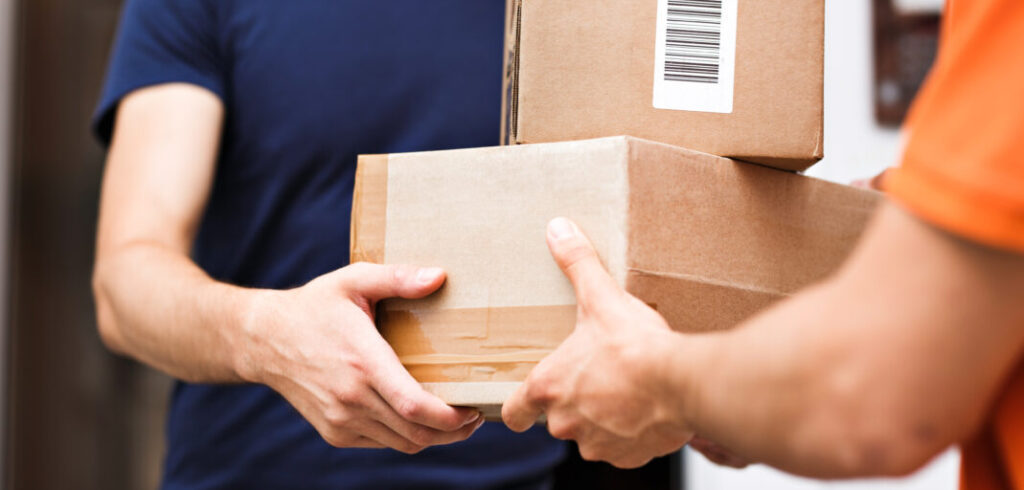Last-mile delivery is the movement of products from a warehouse or distribution center to the customer’s doorstep and it accounts for just over half of an order’s total shipping costs.
Key factors driving up this cost include:
- Fuel – Driving at low speeds, frequent start-stop, and spending more time on the road.
- Location – Diverse and complex routes with lost drivers racking up unnecessary miles.
- Labor – Last-mile delivery requires substantially more drivers than upstream logistics.
- Tight delivery times – Same- or next-day delivery is going to cost you substantially more than 7- to 10-day delivery.
- Failed delivery – A failed delivery costs US$17.20 on average; consider that 8% of first-time domestic US deliveries fail.
- Returns and refunds – US e-commerce sales have a 16.5% return rate, which places a substantial strain on last-mile logistics.
All these factors could be attributed to the shrinking opportunities for economies of scale in last-mile delivery. That is, the closer an item gets to the customer during shipping, the fewer orders that can accompany it. With that, the harder it becomes to split irreducible expenses across many orders. An order may have left the warehouse in a truck containing hundreds of other parcels, but these could drop to dozens or less in that last mile.
But there are ways smaller businesses can optimize shipping and cut last-mile delivery costs.
- Real-time driver tracking and customer notifications
When customers don’t know where their package is, they are bound to be anxious over whether you can get it to them on time as promised. One survey found that 91% of consumers actively track packages they order online.
Track drivers and give customers automated notifications that share the real-time location of their driver or package. This should be accompanied by a dynamic, real-time ETA taking into account changes in traffic as well as any delays the driver encounters at preceding stops.
You will be surprised by how many customers are willing to tolerate slight delays when they can see exactly where their shipment is at any point in time.
- Automatic route planning
Multiple factors determine the best route a delivery driver should take, including:
- Customer availability
- Truck capacity
- Driver schedule
Manually calculating the ideal route is difficult. Automatic route planning allows software to do complex computations and combinations for you. The result is more deliveries completed each day which drives down the average freight rates per delivery.
- Automatic rerouting
A good route is only as good as the circumstances at the time of planning. But there are no guarantees that will hold from the moment the driver leaves the warehouse to when they get to the customer’s doorstep. Everything from road closures and last-minute orders to driver illness and customer unavailability could render the current route inefficient.
Rerouting drivers manually is an arduous, expensive, and time-consuming process that would, among other things, entail reading live traffic maps and making multiple calls. To avoid that, procure route optimization software which can, when necessary, automatically reroute orders based on factors evolving in real time.
- Integrate technology solutions
The average business runs more than 100 applications including multiple solutions that touch on customer fulfilment. Each of these applications collects, processes and stores data that could be useful for your fulfilment staff and logistics partners. By sharing this information across systems and teams, your last-mile delivery could be smoother and more consistent.
Centralize your logistics data by integrating all technology solutions your business uses, especially those touching on last-mile delivery. These could include:
- Route planning software
- Order tracking software
- Inventory management software
- Warehouse management software
- E-commerce store platform
Integration leads to improvements in agility, control and visibility, which eventually lower delivery costs.
- Outsource delivery
Last-mile delivery is expensive for all business sizes but is particularly costly for micro and small businesses. They do not enjoy the order volume of giant retailers so establishing their own delivery infrastructure would not make financial sense. Handing over the entire last-mile delivery to a third-party logistics provider is typically the best approach.
Outsourcing provides a means for businesses to tap into established delivery networks that already have the experience required to execute delivery at considerably lower costs than a micro or small business running last-mile logistics on their own. In one survey, 57% of retailers interviewed had outsourced more of their delivery networks over the preceding five years.
Final thoughts
Last-mile delivery costs take a substantial bite out of business profits. It’s a key reason for the rollout of Amazon Logistics, which now rivals traditional leaders such as UPS, FedEx and USPS in parcel volume. Actually, Amazon Logistics has been so successful that it has been opened up for use by third-party retailers.
Few e-commerce stores enjoy the scale that Amazon does to set up a profitable logistics arm. But the different ways we have covered here provide the opportunity for smaller stores to cut down their last-mile costs and ensure customer satisfaction.


